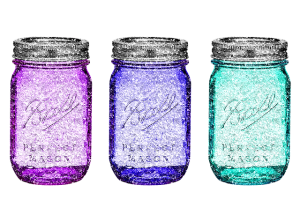Blossoms and Bombs: Collecting Blossoms to Practice Gratitude
 No better time than Thanksgiving to talk about gratitude—an appreciation of goodness, an acknowledgment that there are things that we are thankful for, things that we receive or experience that are not of our own doing, that bring us joy. At least partially, the knowledge that the source of goodness is a result of someone else’s’ actions allows us to feel an interconnectedness with people, things and events outside of ourselves.
No better time than Thanksgiving to talk about gratitude—an appreciation of goodness, an acknowledgment that there are things that we are thankful for, things that we receive or experience that are not of our own doing, that bring us joy. At least partially, the knowledge that the source of goodness is a result of someone else’s’ actions allows us to feel an interconnectedness with people, things and events outside of ourselves.
The experience of gratitude may influence prosocial behavior (McCullough, et.al, 2001; Tsang, 2006) and perhaps this influence may be strengthened if we have strong feelings of inter-connectedness with the world around us. And, certainly, no better time than Thanksgiving in the times of a pandemic to talk about ways to enhance prosocial behavior (social distancing and masks, anyone?!). But the experience of gratitude is not just about benefitting society. Gratitude has been linked with improved mental and physical health (Emmons & McCullough, 2003; Watkins, 2004). So, how do we infuse the practice of gratitude into our lives?
Like every other skill, gratitude can be developed and nurtured in a variety of ways. I would like to share something that my husband’s family taught me: Sharing “blossoms and bombs” over the dinner table. This technique allows us to reap the multiple benefits of sharing a family meal, along with the practice of gratitude. During the meal, each person shares one positive experience, a blossom, and one negative, a bomb, that occurred during the day. Communal sharing lightens the burden of the bombs while the expression of blossoms brings an appreciation for the goodness in one’s life.
Take this one step further. Create a jar of blossoms. Use ribbons, glitter, stickers—whatever it is that makes you happy—to decorate an ordinary mason jar. Once the physical jar is ready, write down one thing you are grateful for and add it to the jar. It can be something as simple as a good cup of coffee in the morning or a walk on a sunny day or it can be something more significant, like a great day at work or the completion of a project. Whatever it is, jot it down and add it to your jar—at least one every day. And just like that, you are practicing gratitude daily. Not only will this provide joy in the moment, but when you have down days, you now have a jar of blossoms to cheer yourself up.
Well, what are you waiting for? Get started on your jar today. As for me, what am I grateful for today? I am grateful for the opportunity to write this piece for Healthy Nurse, Healthy New Jersey. It prompted me to discover the joys of gratitude! Thank you to all of you, and Happy Thanksgiving!
Munira Wells, PhD, RN, and the Healthy Nurse, Healthy New Jersey Team
P.S. For more gratitude exercises, click here.
For a chance to win a Gratitude Journal, let us know what you’re grateful for by sending us a message at healthynurse@njsna.org.
References:
Emmons, R. A., & McCullough, M. E. (2003). Counting blessings versus burdens: An experimental investigation of gratitude and subjective well-being in daily life. Journal of Personality and Social Psychology, 84, 377-389
McCullough, M. E., Kilpatrick, S. D., Emmons, R. A., & Larson, D. B. (2001). Is gratitude a moral affect? Psychological Bulletin, 127, 249-266.
Tsang, J. (2006). Gratitude and prosocial behaviour: An experimental test of gratitude. Cognition and Emotion, 20 (1), 138-148.
Watkins, P. C. (2004). Gratitude and subjective well-being. In R. A. Emmons & M. E. McCullough (Eds.). The psychology of gratitude (pp. 167 – 192). Oxford, UK: Oxford University Press




